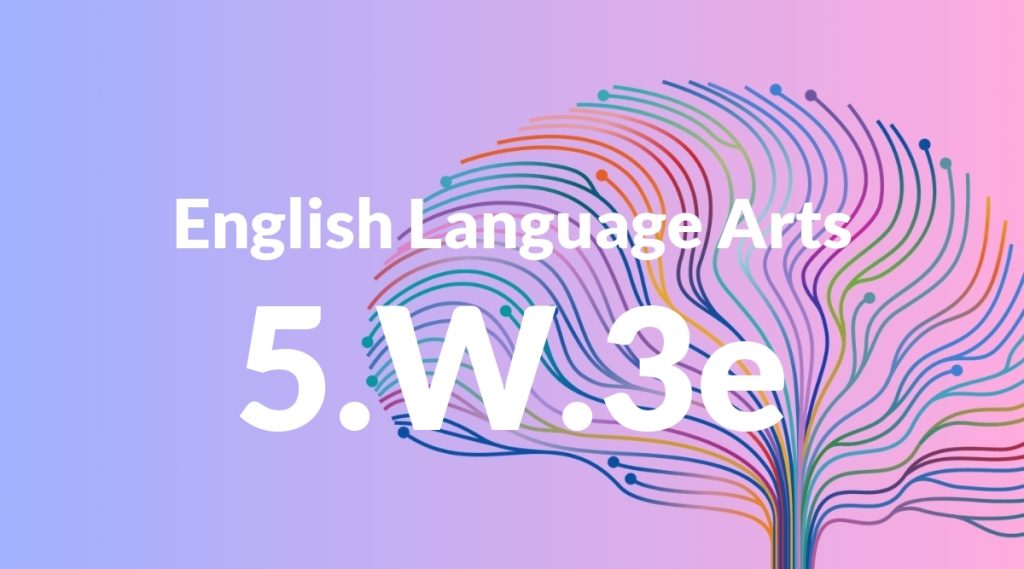Standard: 5.W.3e – Provide a conclusion that follows from the narrated experiences or events.
Grade level: Grade 5
Subject: English Language Arts
Domain: Writing
Teacher Overview
This standard emphasizes the importance of concluding a narrative in a way that provides closure and reflects on the experiences or events described. It helps students understand how to effectively wrap up their stories, making them more coherent and meaningful. Students should be familiar with narrative structures and be able to identify key events in a story. They should also have experience writing the beginning and middle parts of a narrative.
After mastering this standard, students will be able to craft more complex conclusions that integrate themes and draw connections to broader contexts in their writing.
Common Misconception 1
A common misconception is that a conclusion is merely a summary of the story. This is incorrect because a conclusion should provide closure and reflect on the significance of the events, rather than just restating them.
Intervention 1
Use mentor texts to show examples of effective conclusions. Have students practice writing conclusions that reflect on the story’s events and connect to the overall theme.
Common Misconception 2
Another misconception is that a conclusion should introduce new information or events. This is incorrect because a conclusion should focus on wrapping up the narrative, not adding new elements.
Intervention 2
Encourage students to draft multiple conclusions and discuss why adding new information can be confusing. Emphasize the importance of closure and reflection in a conclusion.
Prerequisite Knowledge
Students should understand the basic structure of a narrative, including the beginning, middle, and end, and be able to identify key events and experiences in a story.
Subsequent Knowledge
Students will develop skills in crafting more complex and nuanced conclusions, integrating themes, and drawing connections to broader contexts in their writing.
Instructional Activities
- Analyze conclusions in mentor texts.
- Write multiple endings for the same story and discuss which provides the best closure.
- Peer review sessions focusing on narrative conclusions.
- Create story maps that highlight the conclusion.
- Reflective writing exercises that emphasize the importance of closure.




